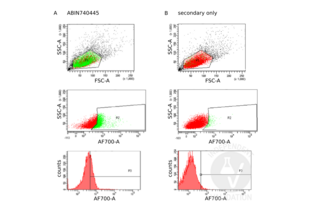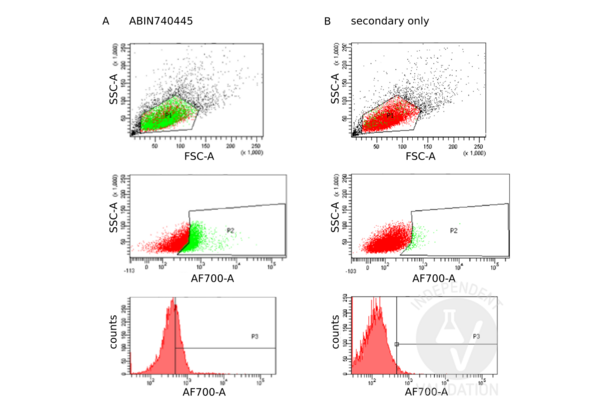CD137 Antibodies
Your search for reliable CD137 antibodies ends here. CD137, known by aliases such as TNFRSF9, tnfrsf9a, Tnfrsf9, is an integral part of our antibody range. Whether you're working with Human, Mouse, Rat, Monkey, Non-Human Primate, or other species, our range of CD137 antibodies offer precise detection across diverse samples. These specialized antibodies are tailored for various scientific applications like FACS, WB, ELISA, IF, IHC, providing you with options like polyclonal, recombinant, and monoclonal antibodies, sourced from different host species such as Rabbit, Mouse, Goat. The efficacy of our antibodies is well-established, demonstrated through multiple methods.
Detailed information, including references, images, and validations by other customers, can be found on each product page. Should you require assistance in finding a specific product, our customer service team is ready to assist. Utilize our CD137 antibodies in your research endeavors for dependable CD137 detection.

 CD137 antibody (AA 101-200) (ABIN740445)
CD137 antibody (AA 101-200) (ABIN740445)
TNFRSF9 Reactivity: Human, Mouse, Rat ELISA, FACS, WB, IHC (p) Host: Rabbit Polyclonal unconjugated
TNFRSF9 Reactivity: Human ELISA, FACS, WB, IHC, IF, IHC (p), Coat, StM Host: Mouse Monoclonal 4-1BB-3201 unconjugated
TNFRSF9 Reactivity: Human ELISA, FACS, WB Host: Mouse Monoclonal 2A12C2 unconjugated
CD137 Antibodies by Reactivity
Find CD137 Antibodies for a variety of species such as anti-Human CD137, anti-Mouse CD137, anti-Rat CD137. The species listed below are among those available. Click on a link to go to the corresponding products.
CD137 Antibodies by Host
Find CD137 Antibodies with a specific Host. The Host listed below are among those available. Click on a link to go to the corresponding products.
CD137 Antibodies by Clonality
Find available monoclonal or polyclonal CD137 Antibodies. Click on a link to go to the corresponding products.
Popular CD137 Antibodies
- (2)
- (1)
- (1)
- (8)
- (5)
- (5)
- (4)
- (4)
- (4)
- (3)
- (2)
- (3)
- (2)
- (3)
- (3)
- (3)
- (2)
- (2)
- (4)
- (1)
Latest Publications for our CD137 Antibodies
: "Anti-CD137 monoclonal antibody enhances trastuzumab-induced, natural killer cell-mediated cytotoxicity against pancreatic cancer cell lines with low human epidermal growth factor-like receptor 2 ..." in: PLoS ONE, Vol. 13, Issue 12, pp. e0200664, (2018) (PubMed).: "Decreased beige adipocyte number and mitochondrial respiration coincide with increased histone methyl transferase (G9a) and reduced FGF21 gene expression in Sprague-Dawley rats fed prenatal low ..." in: The Journal of nutritional biochemistry, Vol. 31, pp. 113-21, (2016) (PubMed).
: "Isoproterenol Increases Uncoupling, Glycolysis, and Markers of Beiging in Mature 3T3-L1 Adipocytes." in: PLoS ONE, Vol. 10, Issue 9, pp. e0138344, (2016) (PubMed).
: "Targeting peripheral blood pro-inflammatory cytotoxic lymphocytes by inhibiting CD137 expression: novel potential treatment for COPD." in: BMC pulmonary medicine, Vol. 14, pp. 85, (2015) (PubMed).
: "Depletion of white adipocyte progenitors induces beige adipocyte differentiation and suppresses obesity development." in: Cell death and differentiation, (2014) (PubMed).
: "Human and mouse CD137 have predominantly different binding CRDs to their respective ligands." in: PLoS ONE, Vol. 9, Issue 1, pp. e86337, (2014) (PubMed).
: "SAHA/Vorinostat induces the expression of the CD137 receptor/ligand system and enhances apoptosis mediated by soluble CD137 receptor in a human breast cancer cell line." in: International journal of oncology, Vol. 41, Issue 4, pp. 1486-94, (2013) (PubMed).
: "CD137 differentially regulates innate and adaptive immunity against Mycobacterium tuberculosis." in: Immunology and cell biology, Vol. 90, Issue 4, pp. 449-56, (2012) (PubMed).
: "Agonist anti-CD137 mAb act on tumor endothelial cells to enhance recruitment of activated T lymphocytes." in: Cancer research, Vol. 71, Issue 3, pp. 801-11, (2011) (PubMed).
: "Epitope mapping of a chimeric CD137 mAb: a necessary step for assessing the biologic relevance of non-human primate models." in: Journal of molecular recognition : JMR, Vol. 22, Issue 3, pp. 242-9, (2009) (PubMed).
Aliases for CD137 Antibodies
tumor necrosis factor receptor superfamily member 9 (TNFRSF9) AntibodiesTNF receptor superfamily member 9 (TNFRSF9) Antibodies
tumor necrosis factor receptor superfamily, member 9a (tnfrsf9a) Antibodies
tumor necrosis factor receptor superfamily, member 9 (Tnfrsf9) Antibodies
4-1BB Antibodies
A930040I11Rik Antibodies
AA408498 Antibodies
AI325004 Antibodies
CD137 Antibodies
Cd137 Antibodies
CDw137 Antibodies
ILA Antibodies
Ly63 Antibodies
TNFRSF9 Antibodies
zgc:136557 Antibodies
Did you look for something else?
- CD133 Antibodies
- CD131 Antibodies
- CD130/gp130 Antibodies
- CD11c Antibodies
- CD11b Antibodies
- CD109 Antibodies
- CD103 Antibodies
- CD101 Antibodies
- CCZ1 Antibodies
- CCT8L2 Antibodies
- CCT8 Antibodies
- CCT7 Antibodies
- CCT6B Antibodies
- CCT6A Antibodies
- CCT4 Antibodies
- CCT3 Antibodies
- CCT2 Antibodies
- CCRN4L Antibodies
- CCRL2 Antibodies
- CCRL1 Antibodies
- CD14 Antibodies
- CD147 Antibodies
- CD15 Antibodies
- CD151 Antibodies
- CD16 Antibodies
- CD16 / CD56 Antibodies
- CD160 Antibodies
- CD161 Antibodies
- CD163 Antibodies
- CD163L1 Antibodies
- CD164 Antibodies
- CD164L2 Antibodies
- CD177 Antibodies
- CD180 Antibodies
- CD19 Antibodies
- CD1a Antibodies
- CD1b Antibodies
- CD1c Antibodies
- CD1d Antibodies
- CD1d1 Antibodies




